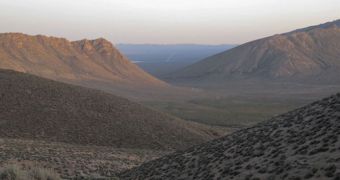Investigators conducting geological research in the Nevada Desert of the United States recently discovered a cooled, solidified blob of magma, that may be a clear indicator that a volcano once existed in the area, millions of years ago.
The area features other, similar granite intrusions, and researchers hope that the new discovery may be able to provide them with more insight into how these structures developed over time, and why.
This “frozen blob of magma” apparently developed between 250 and 65 million years ago, which is about the same time when dinosaurs roamed Earth, Our Amazing Planet reports.
According to geologists, it could be that the formations appeared because the entire area was in the past part of a massive subduction zone, that covered the entire western parts of the North American continent.
These subduction zones appear when two of Earth's tectonic plates meet up, and one of them is forced underneath the other. The process is one of the main triggers for the formation of volcanoes, and also for massive earthquakes.
Currently, the former fault line that was once active in the area has shut down, and the volcanoes that once erupted frequently have all but completely eroded.
The only traces they left behind are their deep roots, containing magma chambers and related channels. In all of these root systems, the formerly-hot magma cooled, and solidified into granitic rocks.
These formations, called batholith, have remained undisturbed for eons, until recent tectonic activity in the area disturbed them, splitting the granitic intrusions belt.
For years, geologists thought that the Sierra Nevada Batholith did not stretch beyond the mountains of the same name, but the new data shows that the belt indeed stretched into northwest Nevada, which was a surprise for the team conducting the work.
“After kicking around for a couple of weeks, I realized the zonation of the granitic rocks formed a concentric pattern over a huge area, similar to more well-studied intrusions in the Sierra Nevada,” explains Stanford University PhD student Nicholas J. Van Buer.
“I decided to map it out and analyze it in more detail, since none of the intrusions in that part of Nevada had even been carefully studied,” he adds.
The researcher says that Nevada was the site of a deep sea millions of years ago, even if no one can tell now due to the fact that the ground dried up.
It was motions of the crusts underneath this sea that eventually cut the supply of magma to the volcanoes in the area, forcing them to shut down, and the magma they contain to solidify.

 14 DAY TRIAL //
14 DAY TRIAL //